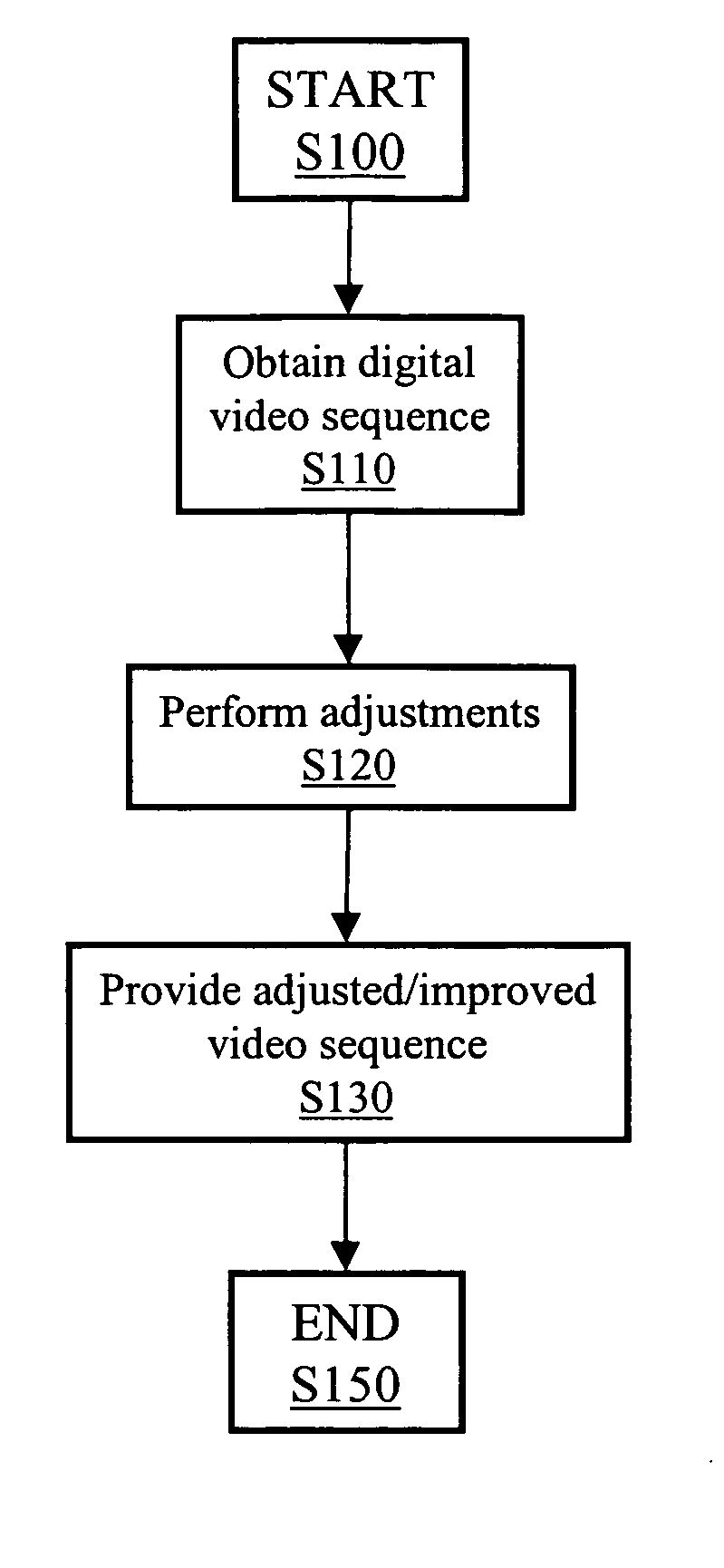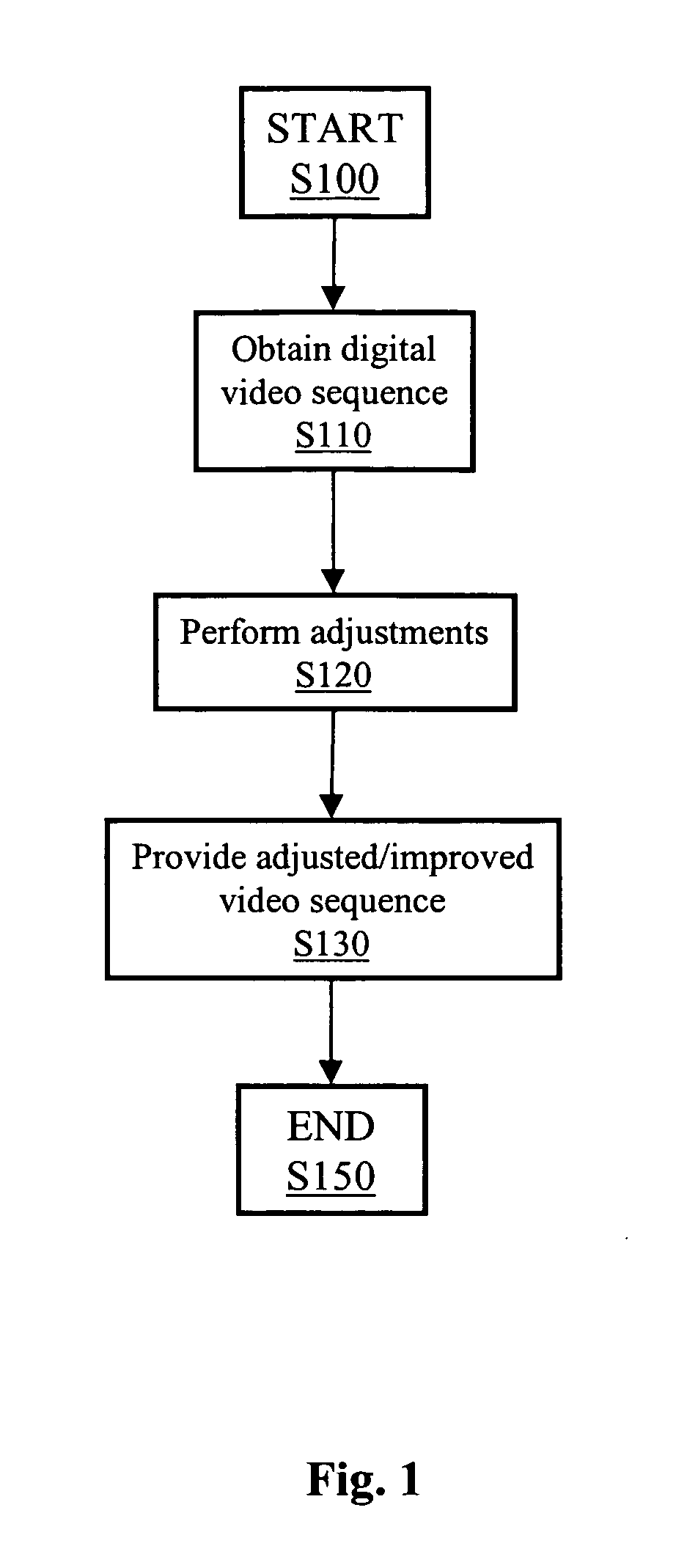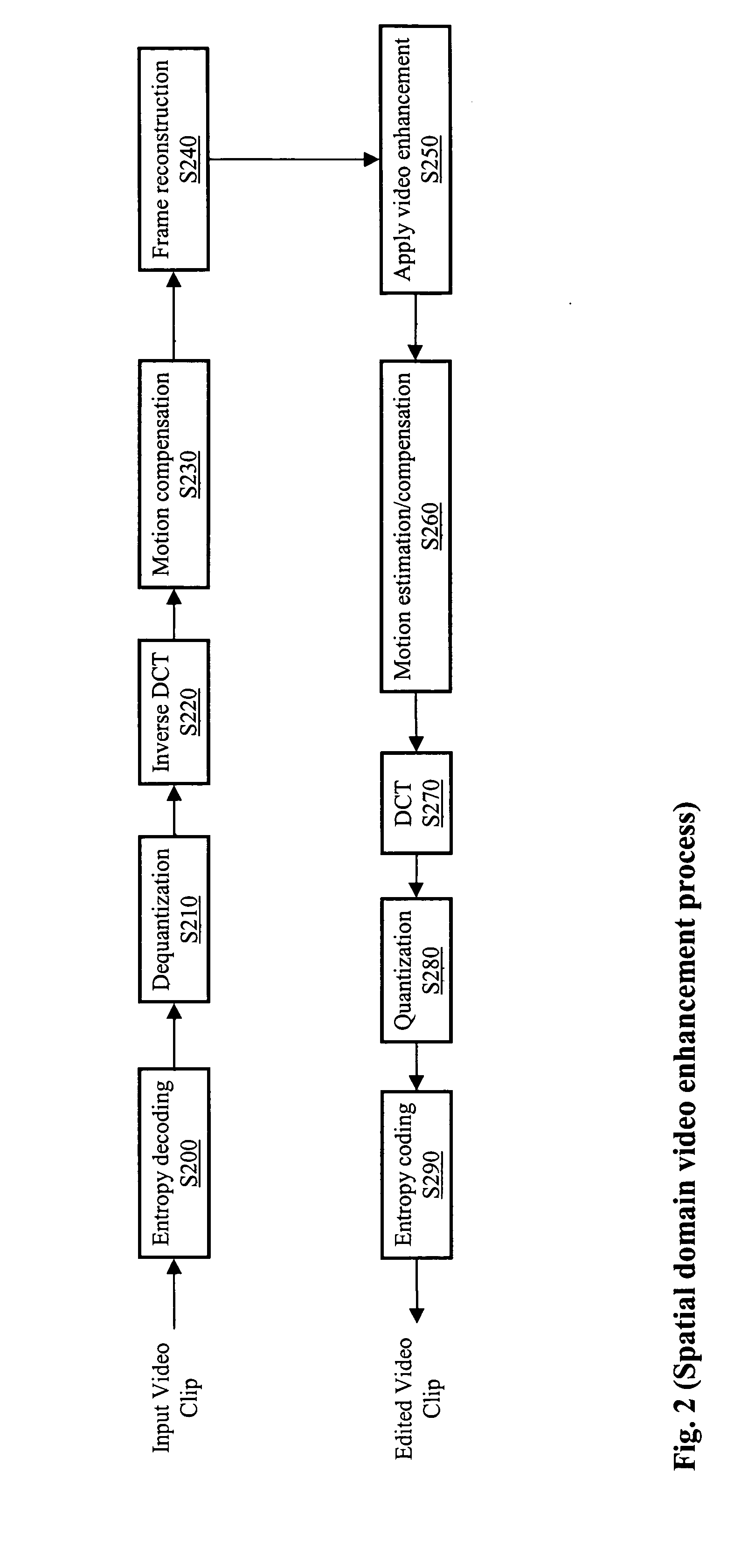Image processing of DCT-based video sequences in compressed domain
a video sequence and compressed domain technology, applied in the field of compressed domain, can solve the problems of reducing brightness and contrast, reducing the efficiency of digital video sequences, so as to avoid computational intensive operations for coding or decoding respectively, and improve the quality of video sequences. , the effect of avoiding complex and computational intensive operations
- Summary
- Abstract
- Description
- Claims
- Application Information
AI Technical Summary
Benefits of technology
Problems solved by technology
Method used
Image
Examples
Embodiment Construction
[0057] With reference to FIG. 1, a flow chart illustrating the principle of the methodology in accordance with the present invention is depicted. In an operation S100 the operational sequence starts. In accordance with the aforementioned description of the inventive concept a providing or obtaining, respectively of a DCT-based video sequence is performed which is shown with reference to an operation S110. The DCT-based sequence originates from an original sequence that is obtained by means of a video camera or the like. Also imaginable is that the video sequence was previously stored in a memory.
[0058] In an operation S120 applying of an image processing operation on the compressed video sequence is provided. The theoretical background of said image processing operation will be described in detail in the following description. Said image processing operation may comprise different steps like brightness or contrast correction or according to the present invention a shadowing compens...
PUM
 Login to View More
Login to View More Abstract
Description
Claims
Application Information
 Login to View More
Login to View More - R&D
- Intellectual Property
- Life Sciences
- Materials
- Tech Scout
- Unparalleled Data Quality
- Higher Quality Content
- 60% Fewer Hallucinations
Browse by: Latest US Patents, China's latest patents, Technical Efficacy Thesaurus, Application Domain, Technology Topic, Popular Technical Reports.
© 2025 PatSnap. All rights reserved.Legal|Privacy policy|Modern Slavery Act Transparency Statement|Sitemap|About US| Contact US: help@patsnap.com



